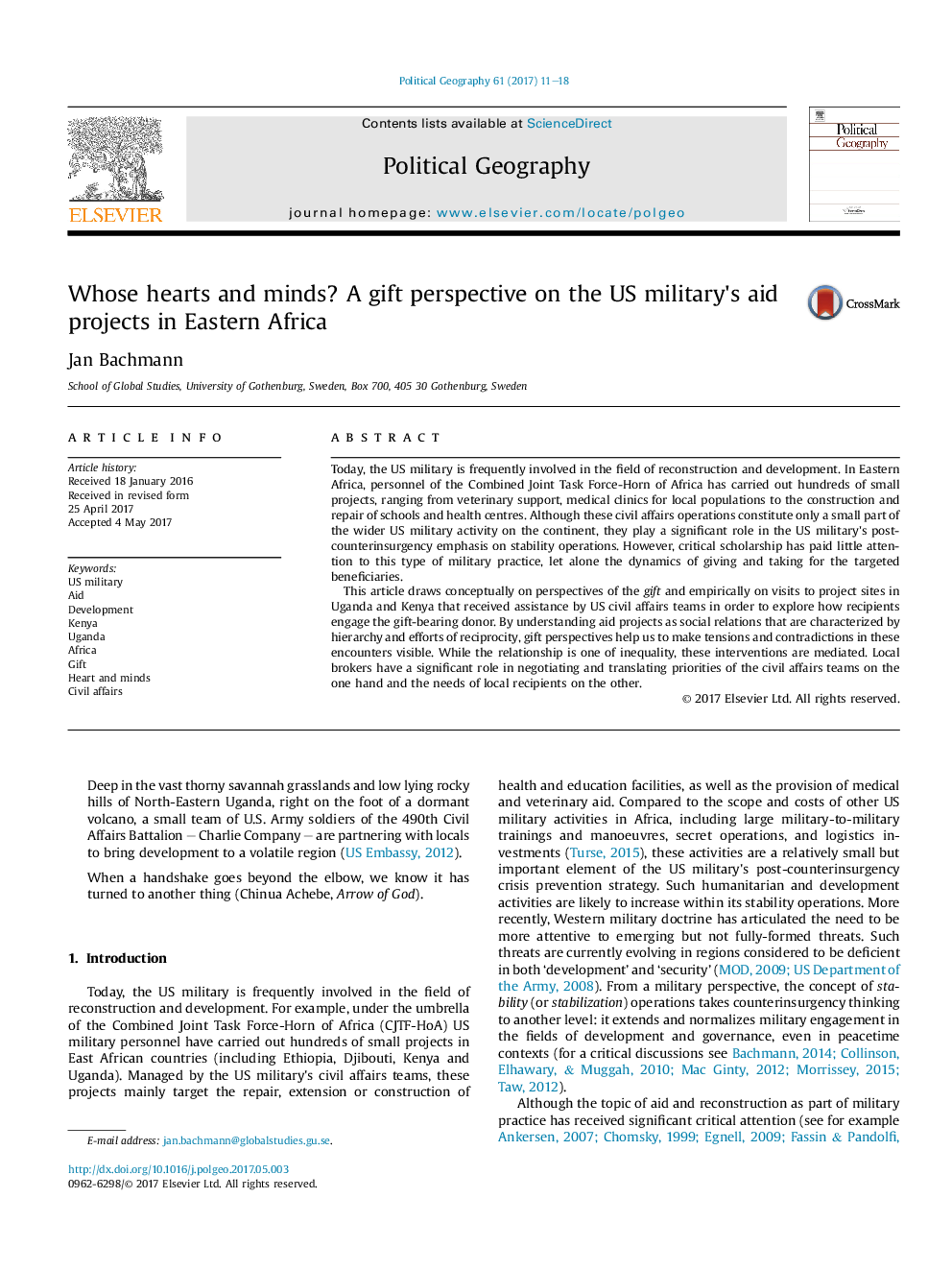| Article ID | Journal | Published Year | Pages | File Type |
|---|---|---|---|---|
| 5118425 | Political Geography | 2017 | 8 Pages |
Today, the US military is frequently involved in the field of reconstruction and development. In Eastern Africa, personnel of the Combined Joint Task Force-Horn of Africa has carried out hundreds of small projects, ranging from veterinary support, medical clinics for local populations to the construction and repair of schools and health centres. Although these civil affairs operations constitute only a small part of the wider US military activity on the continent, they play a significant role in the US military's post-counterinsurgency emphasis on stability operations. However, critical scholarship has paid little attention to this type of military practice, let alone the dynamics of giving and taking for the targeted beneficiaries.This article draws conceptually on perspectives of the gift and empirically on visits to project sites in Uganda and Kenya that received assistance by US civil affairs teams in order to explore how recipients engage the gift-bearing donor. By understanding aid projects as social relations that are characterized by hierarchy and efforts of reciprocity, gift perspectives help us to make tensions and contradictions in these encounters visible. While the relationship is one of inequality, these interventions are mediated. Local brokers have a significant role in negotiating and translating priorities of the civil affairs teams on the one hand and the needs of local recipients on the other.
